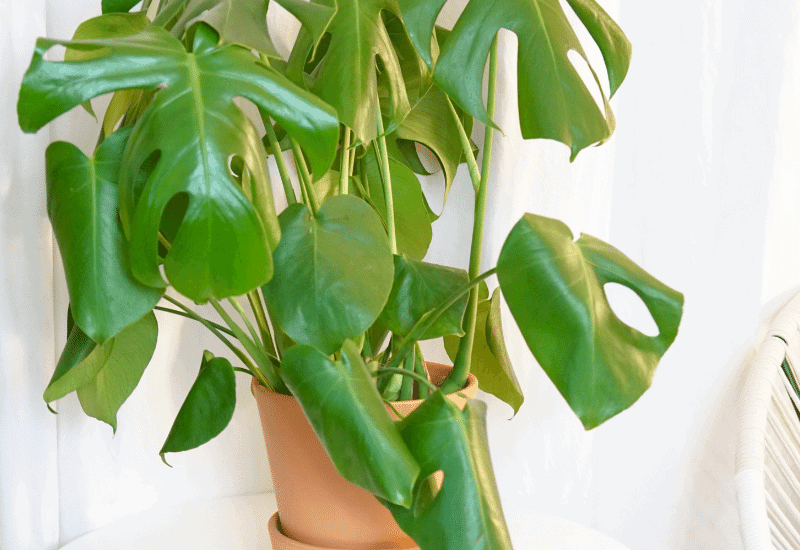
Monsteras are known for their beautiful, striking foliage. If you notice that your monstera leaves are suddenly curling, it can be alarming, especially when you are not sure what could be causing the leaves to curl.
The most likely reason your monstera leaves could be curling is that it is thirsty and ready for a drink, but pests, excessive sun exposure, heat stress, nutrient deficiencies or even low humidity can also cause monstera leaf curl.
If your Monstera plant’s leaves are curling, it is important to identify the underlying cause and take steps to address it in order to keep your plant healthy.
While curling leaves are often a sign that your monstera plant is experiencing a problem, there’s no need to panic, as many of these reasons have simple solutions and can be fixed.
We’re going to look at the common (and not-so-common) reasons that your monstera’s leaves might curl, and highlight some simple solutions to help keep your monstera happy, thriving, and showing off its beautiful foliage!
Types of Leaf Curling Your Monstera May Be Experiencing:
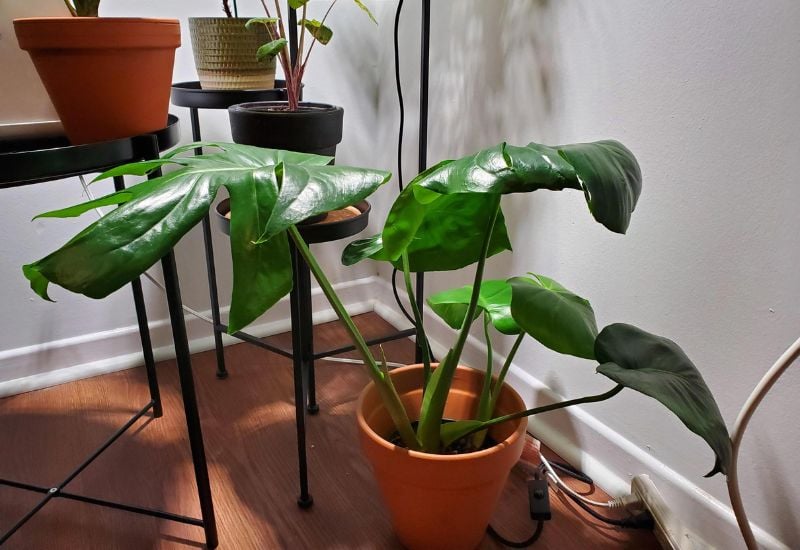
Folding Leaves: This type of curl can resemble an upside-down taco, where the leaves droop and fold inwards underneath itself, likely due to underwatering. This can sometimes be accompanied by some brown crisping of the leaves.
Tightly Curled Leaves: This can often be accompanied by general discoloration and yellowing leaves at the tips and is often attributed to pests or humidity problems.
Other Symptoms That You May Notice With Curled Leaves:
What Your Monsteras’ Curling Leaves Are Trying To Tell You
While no one wants to see their beloved monstera looking miserable, curled leaves on Swiss cheese plants are relatively easy to fix.
Here are sine possible reasons your monsteras’ leaves could be curling and what to do about each.
1: Your Monstera Has Been Underwatered
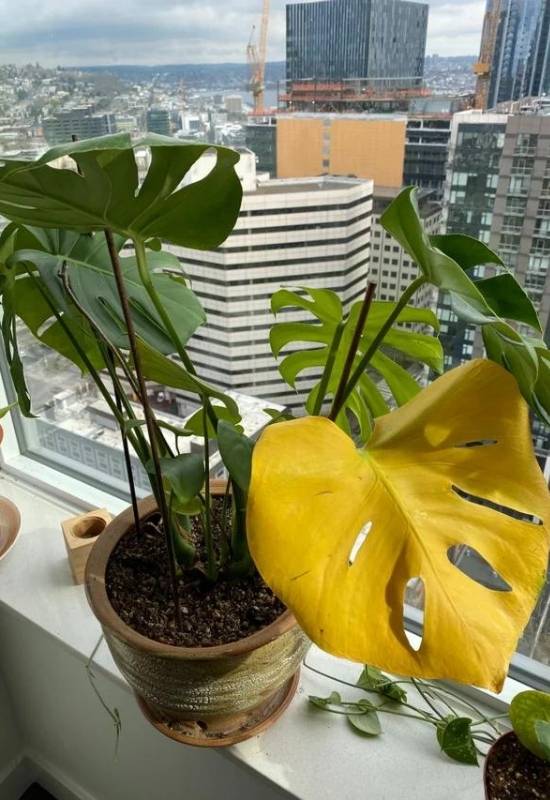
The most common challenge that any houseplant owner encounters is watering their houseplant properly, but this is particularly true for monsteras.
If your monstera houseplant is inadequately watered, it will begin to curl its leaves to slow the process of photosynthesis by reducing the amount of surface area exposed to the sunlight.
The leaves will then curl to reduce the surface area to avoid having any moisture evaporate from the leaf.
This will initially look like droopy, sad leaves that curl slightly downward. If the monstera is without water for too long, the leaf will start to become more dry and stiff and curl and shrivel more tightly, which is more permanent leaf damage.
Solution: How to Fix An Underwatered Monstera?
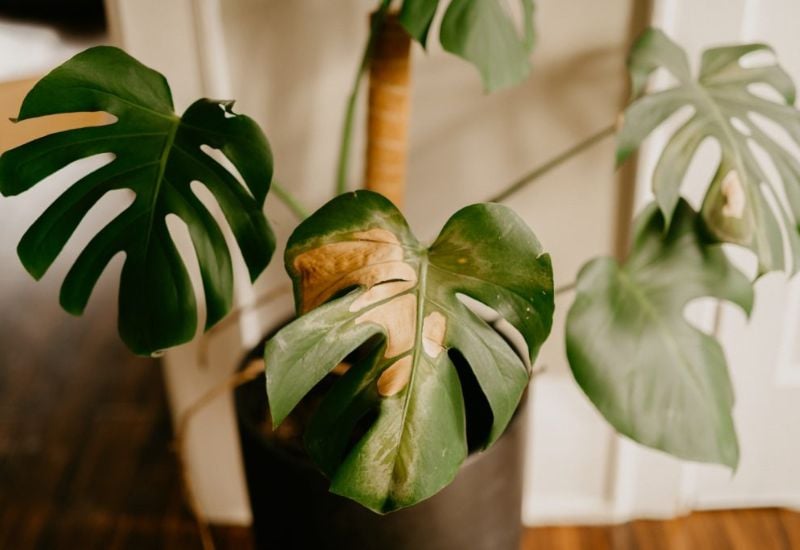
The simplest solution would be to give your monstera a thorough drink. Going forward, how can you be sure that your monstera doesn’t suffer from being underwatered in the future? The best solution is to get yourself a moisture meter.
A moisture meter has a prong that you can stick into your monstera’s soil and it will provide a reading of the moisture levels.
When it comes to monsteras, the best time to water is when the moisture meter reads almost dry, but not fully dry. Depending on your moisture meter, this will read at a level 1 or 2.
Incorporating a moisture meter into your daily plant care routine is quite easy, very inexpensive, and will save you a lot of heartache in the long run if you tend to underwater or even overwater your monstera.
If you don’t have a moisture meter, you can stick your finger deep into the soil to check the moisture levels yourself.
Not only will you feel the moisture levels for yourself, but you will also be able to notice wet or moist soil sticking to your fingertip.
While this method is not as accurate, this is a great daily hack to determine if your monstera is ready for a drink and it will ultimately prevent your monstera leaves from curling.
2: Your Monstera Might Be Rootbound:
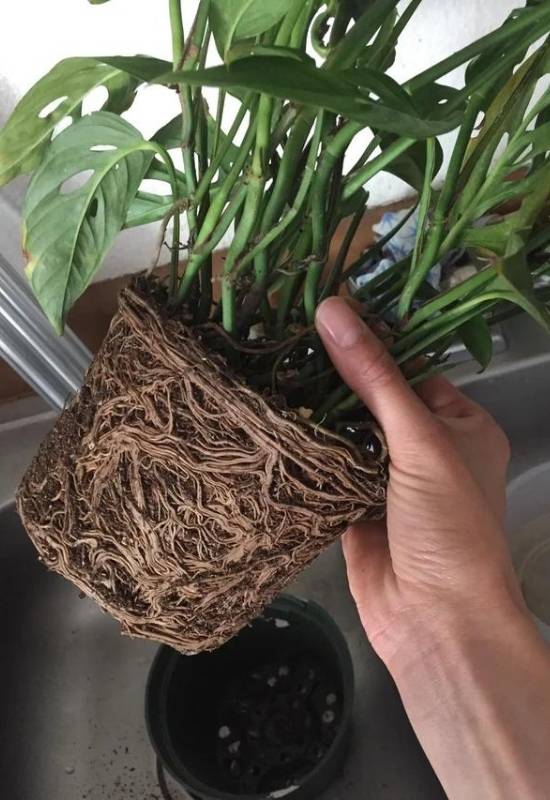
If you find that you are constantly needing to water your monstera but it continues to dry out and curls its leaves, there is a good chance that your monstera might be rootbound.
Having a rootbound monstera means that your monstera’s roots have grown so quickly, that they have overcrowded the pot.
This makes it more difficult for the roots to hold onto soil, making it more difficult for your monstera to absorb water.
Here’s How To Tell That Your Monstera Is Rootbound:
Solution: Rescue Your Unhappy Monstera From Its Pot:
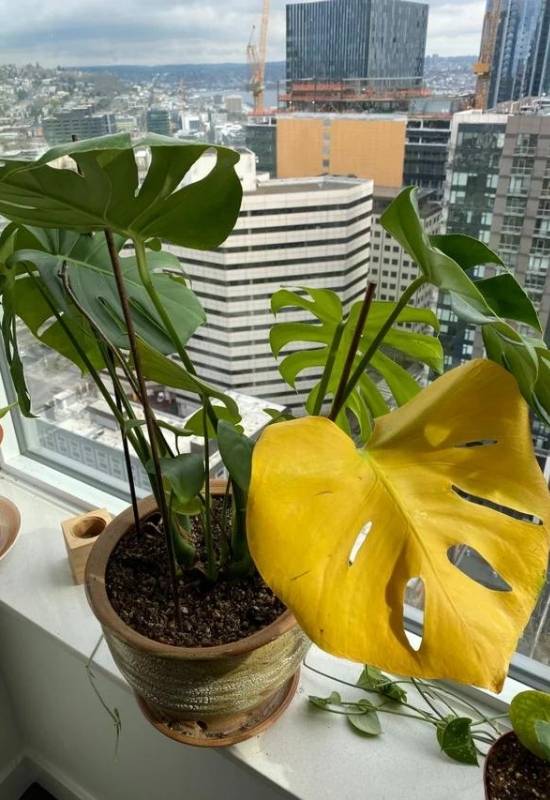
If your monstera’s leaves are curling due to its pot size, it is time for a new one! You will need to repot your monstera houseplant into a larger pot to keep it happy and thriving.
A good rule of thumb for repotting any houseplant is to upgrade to a pot that is 2 inches larger than its previous home.
This will give your monstera enough room to grow, without giving it a home that is too large.
Here are a few options for new pots that your monstera will love:
3: Your Monstera’s Leaf Might Still Be Unfurling
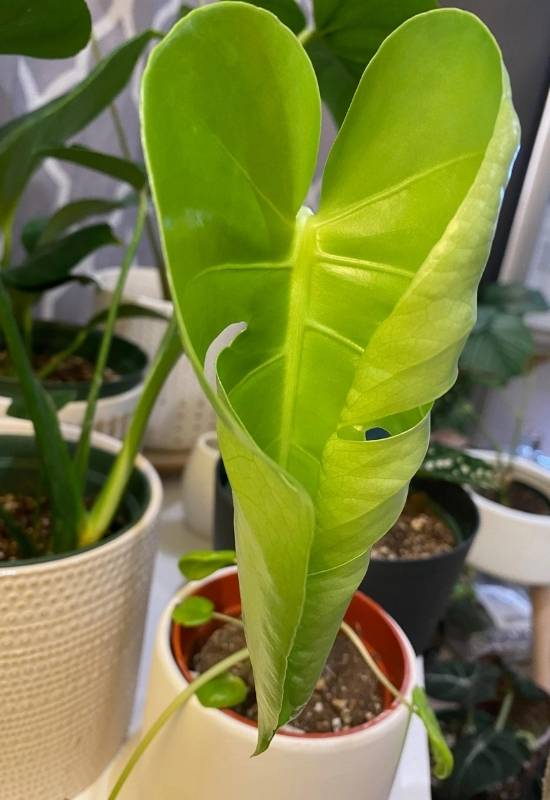
If you notice a single monstera leaf is curly and is a lighter pigmented green color than the rest, then it is possible that this is a brand new leaf and you have nothing to worry about! A new monstera leaf can be easily hidden by other leaves, as the new growth emerges very stem-like and then slowly unfurl.
The entire leaf will begin tightly curled and will slowly uncurl from the center to the tips and open to receive light.
This leaf is still developing chlorophyll, giving it that lighter appearance, and the leaf itself will strengthen and become more sturdy over time as it matures.
4: Your Monstera Leaves Could Be Curling Because It Has Pests
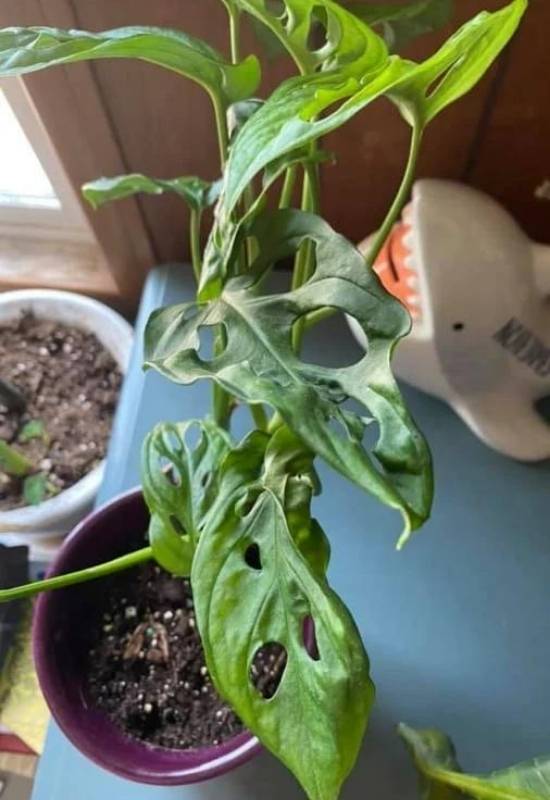
Even though your monstera lives indoors, it can still develop a pest outbreak. Many houseplant pests will feast on the chlorophyll in the leaves, and without chlorophyll, your monstera leaves will curl and become yellow.
Pests are typically attracted to houseplants that are in distress, but ironically, they can also cause your houseplant great distress.
Solution: Eliminate Pests From Your Monstera
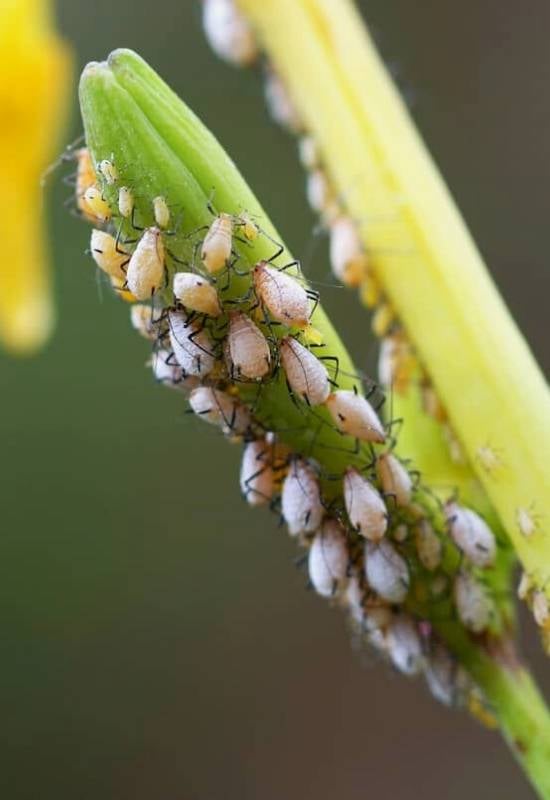
Whether pests are the cause of your monstera’s unhappiness or an unfortunate add-on, if you suspect that your monstera has a pest problem, you need to act immediately.
Most houseplant pests can be treated by thoroughly rinsing the leaves and stems and treating the houseplant with a houseplant-specific insecticide solution that can be found at most garden centers or big box stores.
You may need to repeat this treatment a few times until your pest problem disappears.
In general, it’s great practice for monstera owners to monitor their plants regularly for any signs of pests before they become out of control and do serious damage to your plant.
You can even treat your monstera for pests as a preventative measure. Some signs to look out for include:
5: Your Monstera’s Soil Is Devoid of Nutrients
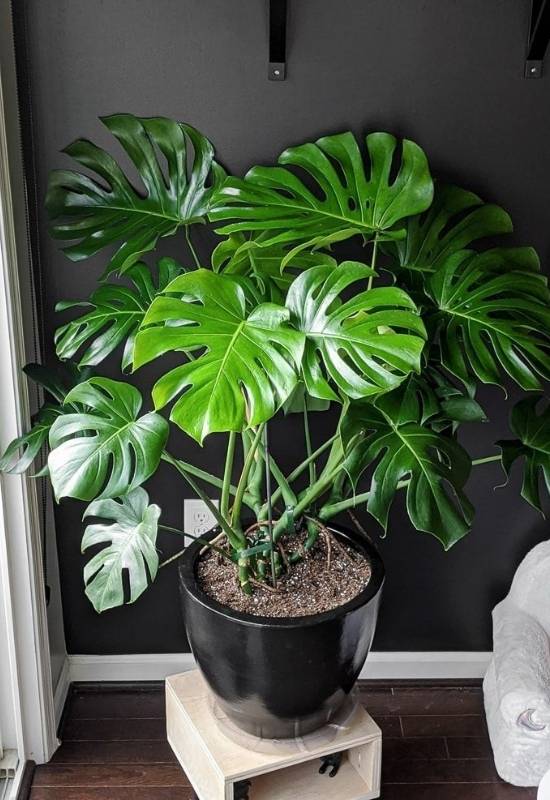
Is your monstera’s soil hard, crumbly, dusty or has a foul odor? If your soil looks like this when combined with your monstera’s curled leaves could indicate that the soil is lacking in nutrition for your plant.
Not only will poor soil quality prevent your monstera from getting the water that it needs, but it can cause a host of nutrient deficiencies in your monstera.
6: Your Monstera Has Fertilizer Burn
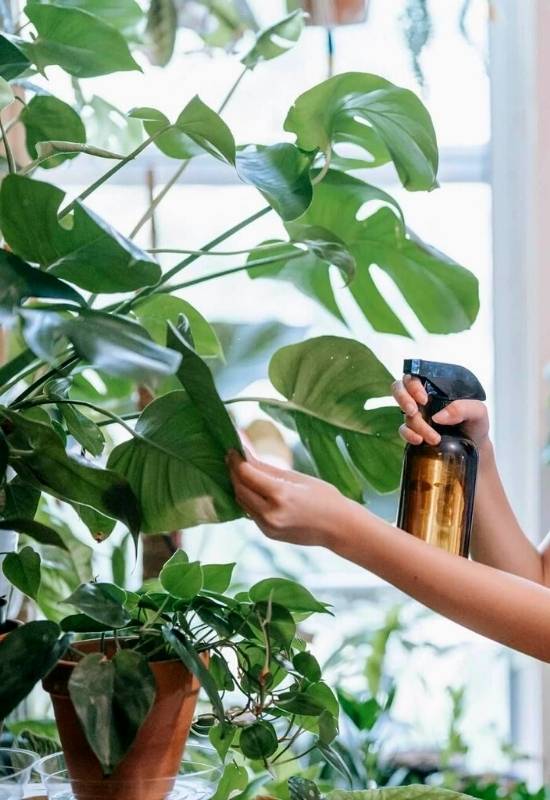
On the opposite end of the spectrum, your monstera may have curling leaves because it is experiencing fertilizer burn.
A good indicator that your monstera has fertilizer burn is that the leaves will be tightly curled with crispy edges that might even appear burnt like they have touched a flame.
This may be of no fault of your own. Some growers and sellers will overfertilize their plants either deliberately or accidentally to sell a full, beautiful houseplant.
Solution: Change Your Monstera’s Soil
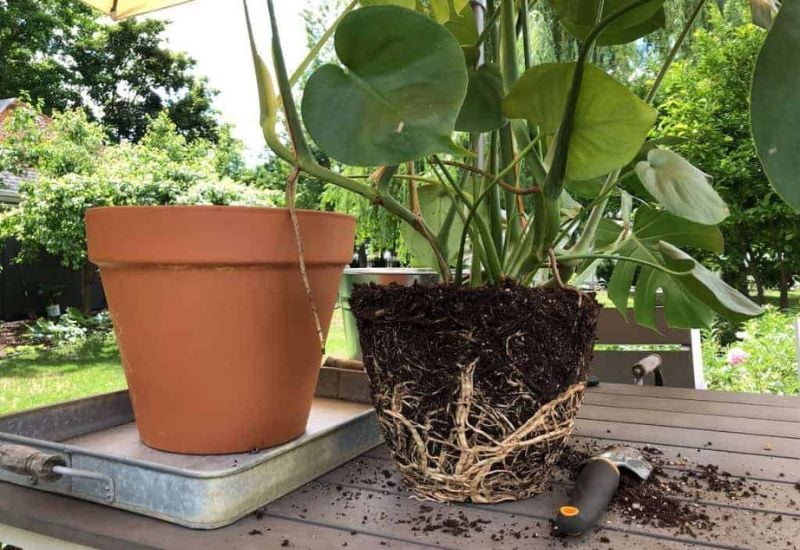
The best solution, in this case, is to improve your monstera’s soil. Quality soil for happy monsteras should be well-draining so that air can also reach the roots.
You can find high-quality soil at your local garden center or big box store. You can also combine your own ingredients to make a soil mix for your monstera, or add to the existing soil.
Some great nutrient-packed ingredients that you can add to your monstera’s soil include orchid bark, perlite or pumice, worm castings and horticultural charcoal.
If your monstera is suffering from soil lacking in nutrients, you may also want to consider adding soil enhancers or fertilizer during the growing season, which is when your monstera will grow the most, and therefore require more nutrients.
If your monstera is suffering from fertilizer burn, it’s best to refrain from fertilizing again until your plant has recovered from the stress.
Prune away any particularly damaged leaves so your monstera can focus on its recovery. Dilute any fertilizer you use in the future or consider switching fertilizer brands altogether.
7: Your Monstera Might Not Have Enough Humidity
If the leaves on your monstera are curled tightly upwards and inwards, with some leaf browning or crispy edges, then it is very likely that there is not enough humidity.
If the leaves are not hydrated, they can dry up and begin to curl at the tip of the leave. In the wild, monsteras live in a tropical location, with warm temperatures and high humidity levels.
Bringing a houseplant into a typical house is an abrupt change, which can cause your monstera distress.
In general, monsteras require humidity levels around 40% but will be most happy in conditions with humidity levels at 60%.
Solution: Increase Humidity Levels In Your Space
If you are not sure what the humidity levels are in your space, the easiest way to find out is with a hygrometer.
These are small, inexpensive devices that will take a reading of the temperature and humidity levels of the space.
If you find that your monstera needs supplemental humidity, the best way to accomplish this is with a humidifier.
If a humidifier is not in your budget, there are other options, including:
8: Your Monstera Is Getting Too Much Sunlight
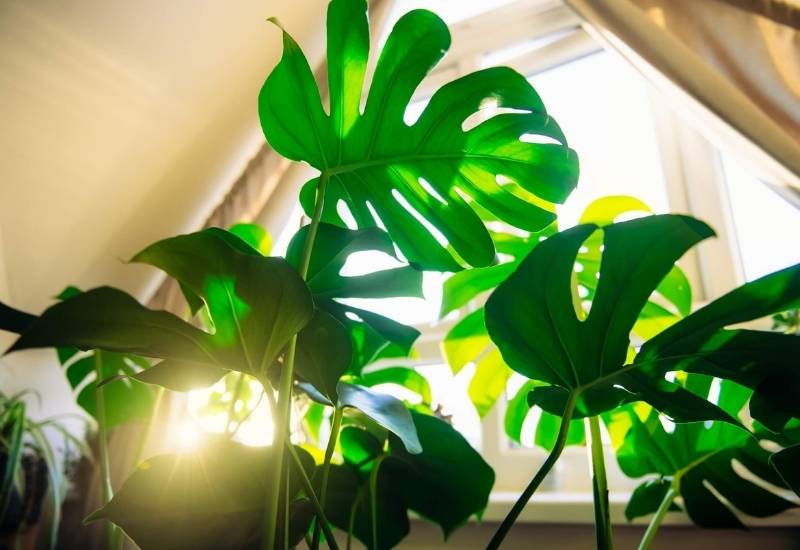
Sunlight that is too strong can not only cause your monstera to dry out faster, but it can also result in sunburn on the leaves.
This is especially true if your monstera’s leaves are curling and yellowing or appear burnt by the sun.
Monsteras are happiest in bright indirect light, but prolonged exposure to direct, strong light can be too much for your plant. Monsteras will curl their leaves to protect themselves from too much light exposure.
If you have already ruled out the above reasons, but your monstera is being blasted by light in a southern facing window, the problem is that it is likely getting too much light.
Solution: Reduce Sunlight Exposure For Your Monstera
If your monstera’s leaves are curling to protect themselves from excessive sunlight, there are a few simple solutions that will give your plant some much-needed relief:
9: Your Monstera is in Shock
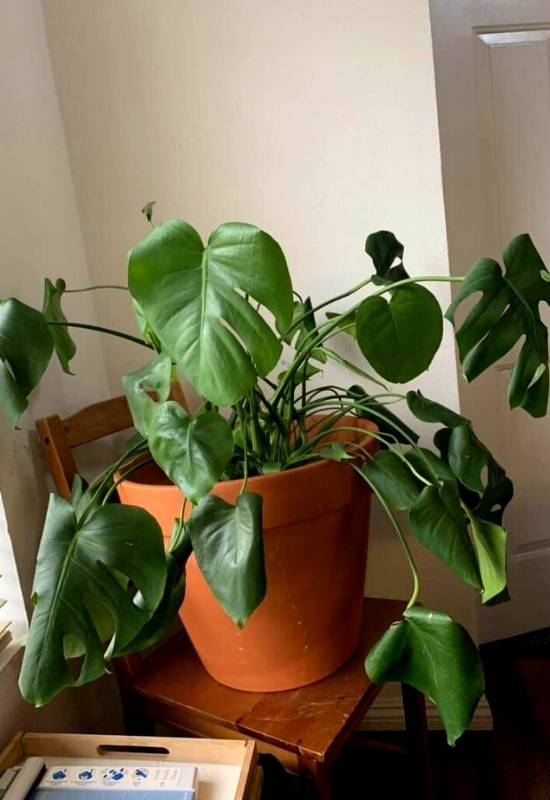
Lastly, your monstera’s leaves might curl because your plant has entered self-preservation mode due to shock.
Monsteras in general can be hardy houseplants. However, if they endure a traumatic event, this could send them into shock.
They might curl their leaves or even drop leaves so they can focus on recovering. Here are a few conditions that could cause your monstera to go into shock:
Solution: Rehabilitate your Monstera
There are a few ways to rehab a monstera if it is experiencing shock. This will help your monstera on the road to recovery. This includes:
Final Thoughts
If you notice that your houseplant leaves are curling, don’t panic! Go down the list above and rule out each possibility until your monstera returns to a happy state. In general, here are a few tips to ensure that your beautiful monstera stays happy:
Last but not least, don’t forget to have patience with your monstera (and with yourself!) Give your monstera plenty of time to recover once you’ve begun treating it.
And be kind to yourself in the process if you made a mistake. Part of the joy of having houseplants in our home is the lessons that we learn along the way.

Written By
Amber Noyes
Amber Noyes was born and raised in a suburban California town, San Mateo. She holds a master’s degree in horticulture from the University of California as well as a BS in Biology from the University of San Francisco. With experience working on an organic farm, water conservation research, farmers’ markets, and plant nursery, she understands what makes plants thrive and how we can better understand the connection between microclimate and plant health. When she’s not on the land, Amber loves informing people of new ideas/things related to gardening, especially organic gardening, houseplants, and growing plants in a small space.
